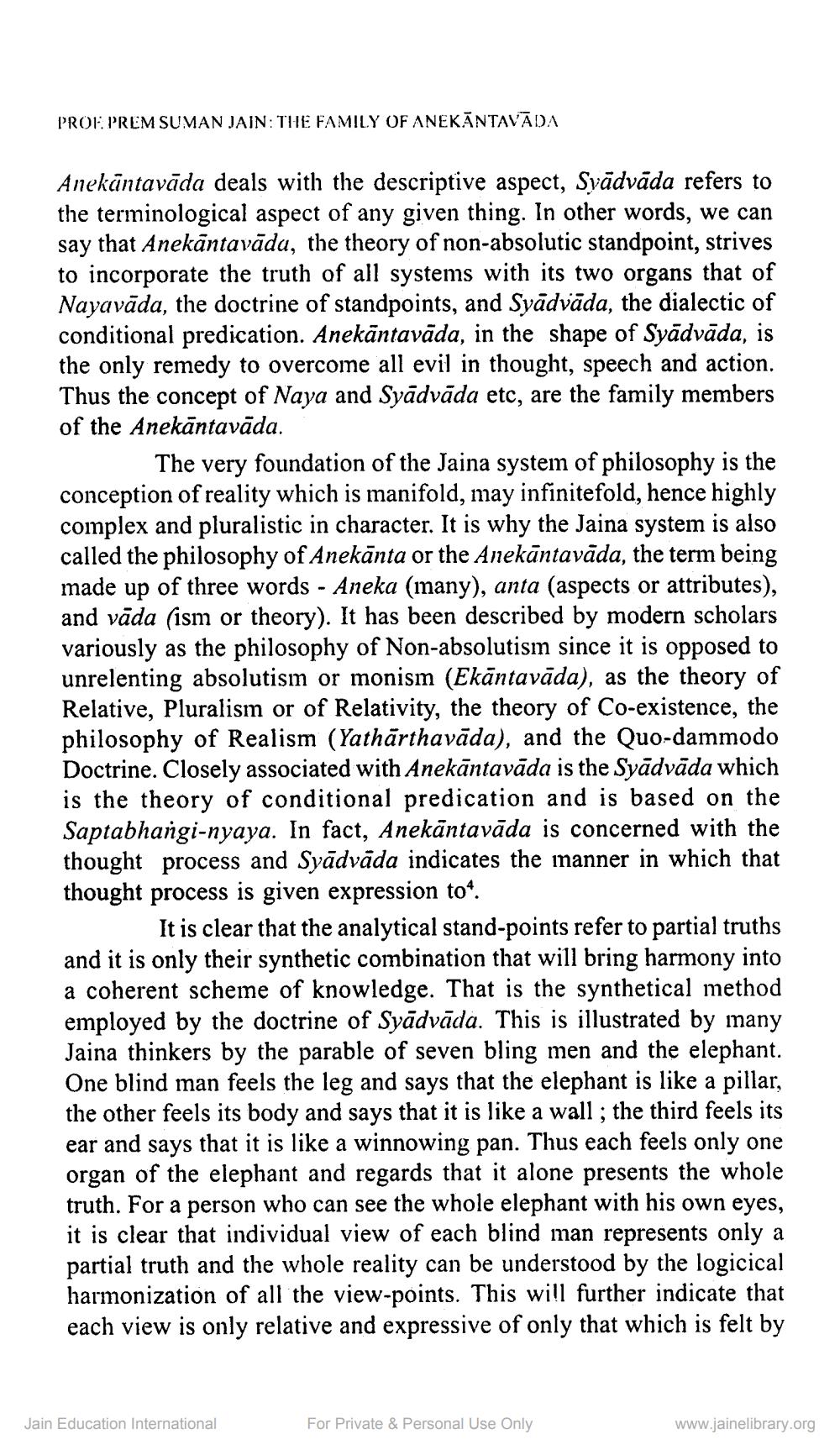Book Title: Jain Journal 2003 10 Author(s): Jain Bhawan Publication Publisher: Jain Bhawan Publication View full book textPage 5
________________ PROF: PREM SUMAN JAIN: THE FAMILY OF ANEKĀNTAVĀDA Anekāntavāda deals with the descriptive aspect, Svādvāda refers to the terminological aspect of any given thing. In other words, we can say that Anekāntavāda, the theory of non-absolutic standpoint, strives to incorporate the truth of all systems with its two organs that of Nayavāda, the doctrine of standpoints, and Syādvāda, the dialectic of conditional predication. Anekāntavāda, in the shape of Syādvāda, is the only remedy to overcome all evil in thought, speech and action. Thus the concept of Naya and Syādvāda etc, are the family members of the Anekāntavāda. The very foundation of the Jaina system of philosophy is the conception of reality which is manifold, may infinitefold, hence highly complex and pluralistic in character. It is why the Jaina system is also called the philosophy of Anekānta or the Anekāntavāda, the term being made up of three words - Aneka (many), anta (aspects or attributes), and vāda (ism or theory). It has been described by modern scholars variously as the philosophy of Non-absolutism since it is opposed to unrelenting absolutism or monism (Ekāntavāda), as the theory of Relative, Pluralism or of Relativity, the theory of Co-existence, the philosophy of Realism (Yathārthavāda), and the Quo-dammodo Doctrine. Closely associated with Anekāntavāda is the Syādvāda which is the theory of conditional predication and is based on the Saptabhangi-nyaya. In fact, Anekāntavāda is concerned with the thought process and Syādvāda indicates the manner in which that thought process is given expression toʻ. It is clear that the analytical stand-points refer to partial truths and it is only their synthetic combination that will bring harmony into a coherent scheme of knowledge. That is the synthetical method employed by the doctrine of Syādvāda. This is illustrated by many Jaina thinkers by the parable of seven bling men and the elephant. One blind man feels the leg and says that the elephant is like a pillar, the other feels its body and says that it is like a wall ; the third feels its ear and says that it is like a winnowing pan. Thus each feels only one organ of the elephant and regards that it alone presents the whole truth. For a person who can see the whole elephant with his own eyes, it is clear that individual view of each blind man represents only a partial truth and the whole reality can be understood by the logicical harmonization of all the view-points. This will further indicate that each view is only relative and expressive of only that which is felt by Jain Education International For Private & Personal Use Only www.jainelibrary.orgPage Navigation
1 ... 3 4 5 6 7 8 9 10 11 12 13 14 15 16 17 18 19 20 21 22 23 24 25 26 27 28 29 30 31 32 33 34 35 36 37 38 39 40 41 42 43 44 45
